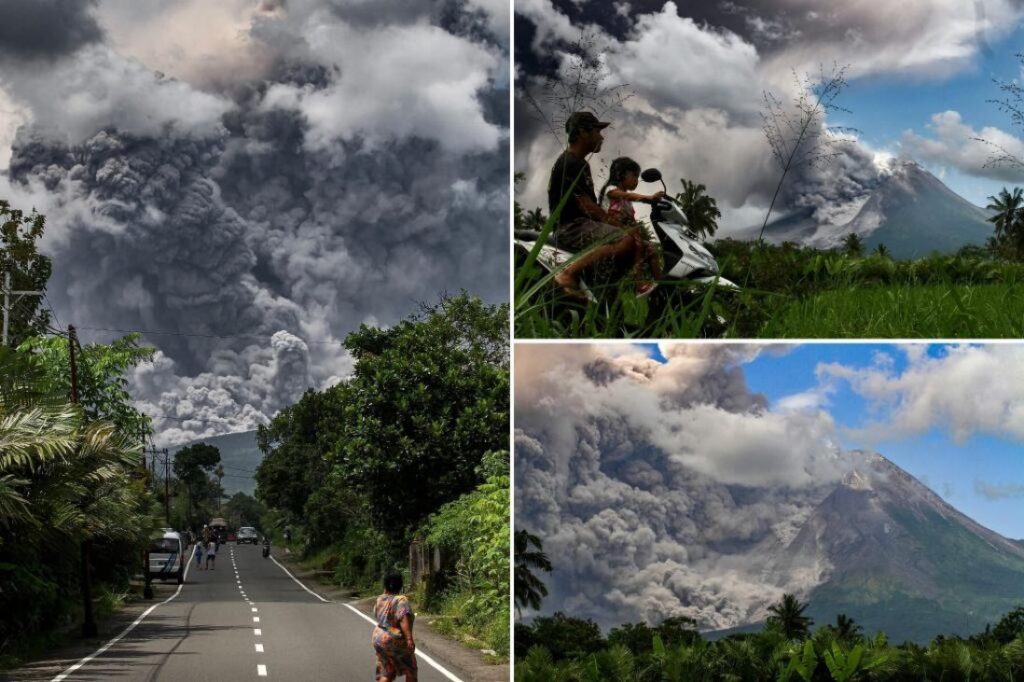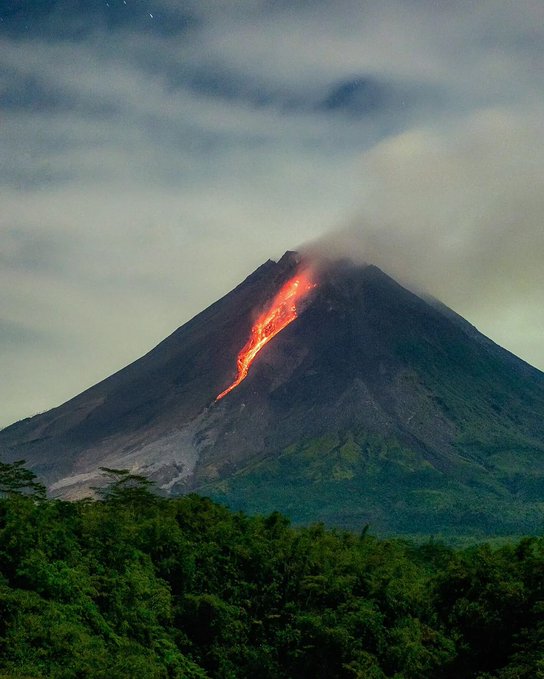
Indonesia’s Mount Merapi has erupted, spewing out smoke and ash that blanketed villages near the crater. And forcing authorities to halt tourism and mining activities on the slopes of the country’s most active volcano.
Mount Merapi, located on the border between the Indonesian province of Central Java and the Special Region of Yogyakarta, erupted twice on Tuesday morning, spewing smoke and ash. The country’s geological disaster institute BPPTKG in a written statement reported that the volcano spewed hot ash at 5.50 a.m. and 5.59 a.m. local time.
Authorities have told nearby residents to avoid the area within a seven-kilometer radius of the crater. The status of Mount Merapi, the most active of Indonesia’s 130 volcanoes. It has stayed unchanged at its second-highest level since November 2020. In 2010, its major eruption killed over 300 people and displaced 20,000 residents.
Also Read: Indonesia moving its capital from Jakarta to Nusantara
Footage shot by residents showed Mt. Merapi spewing a giant cloud of grey ash high above its crater. Which later engulfed the mountain and surrounding rice paddy fields, roads, and bridges, and turned the sky black. A video shared by the Environment Ministry on Twitter showed a pyroclastic flow of lava, rocks, and hot gases gushing down the mountainside.
People fled the eruption on motorcycles, with almost 2,500 people forced to evacuate, authorities said.
People fled the eruption on motorcycles, with almost 2,500 people forced to evacuate, authorities said. The 2,963 meter-high (9,721 feet) Merapi is one of Indonesia’s most active volcanoes. It was already on the country’s second-highest alert level.
History of eruptions
Official at local monitoring post, Yulianto said no residents have been evacuated. “This has only been observe as one time event, there have been 5-6 avalanches. If the coverage continue to increase and the distance is further than 7 kilometres, it is likely that the residents will be recommended to evacuate,” he said.

Saturday’s was Merapi’s most powerful eruption since 1930, when about 1,300 people were killed. An eruption in 1994 left about 60 people dead. Indonesia, which has nearly 130 active volcanoes, sits on the Pacific Ring of Fire, where the meeting of continental plates causes high volcanic and seismic activity.
